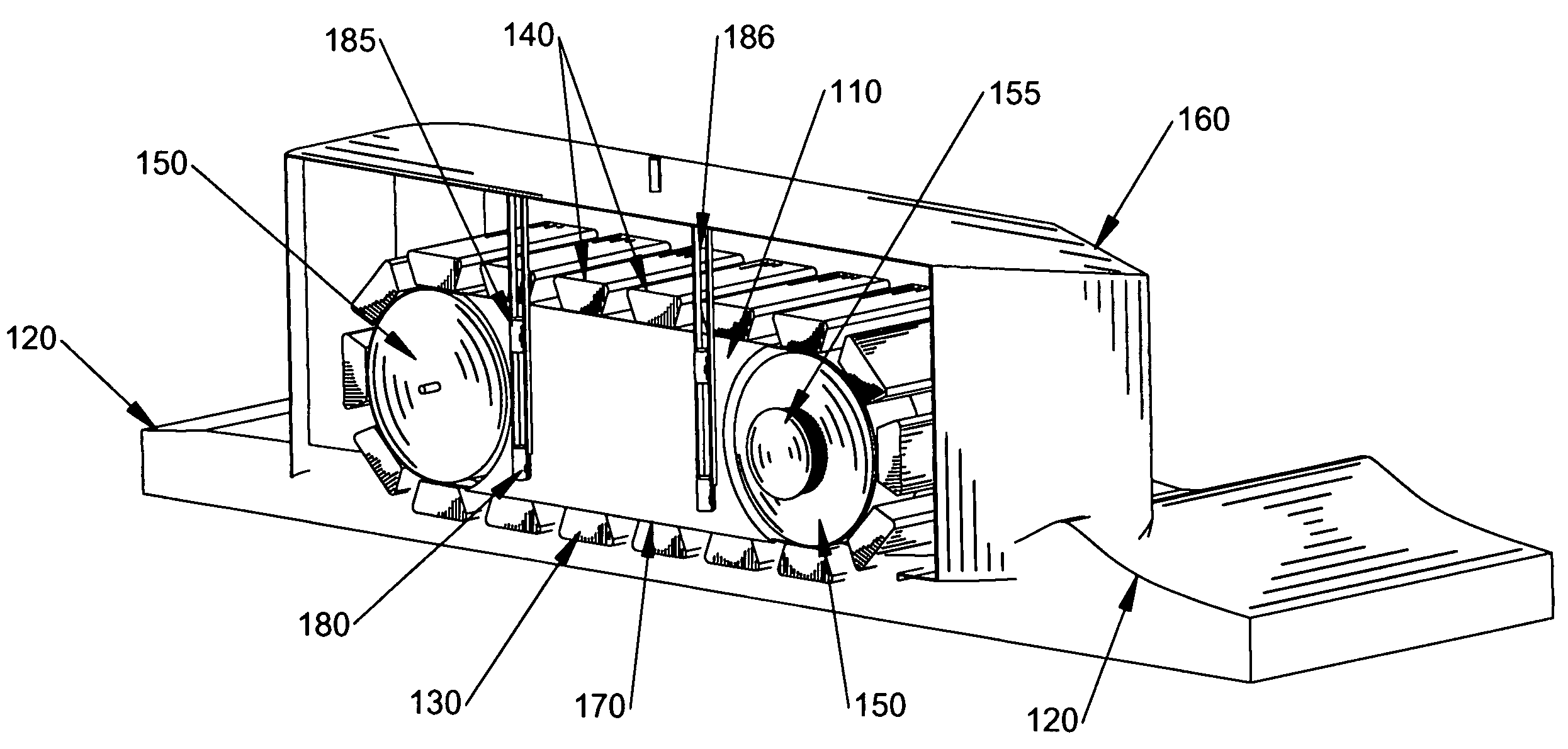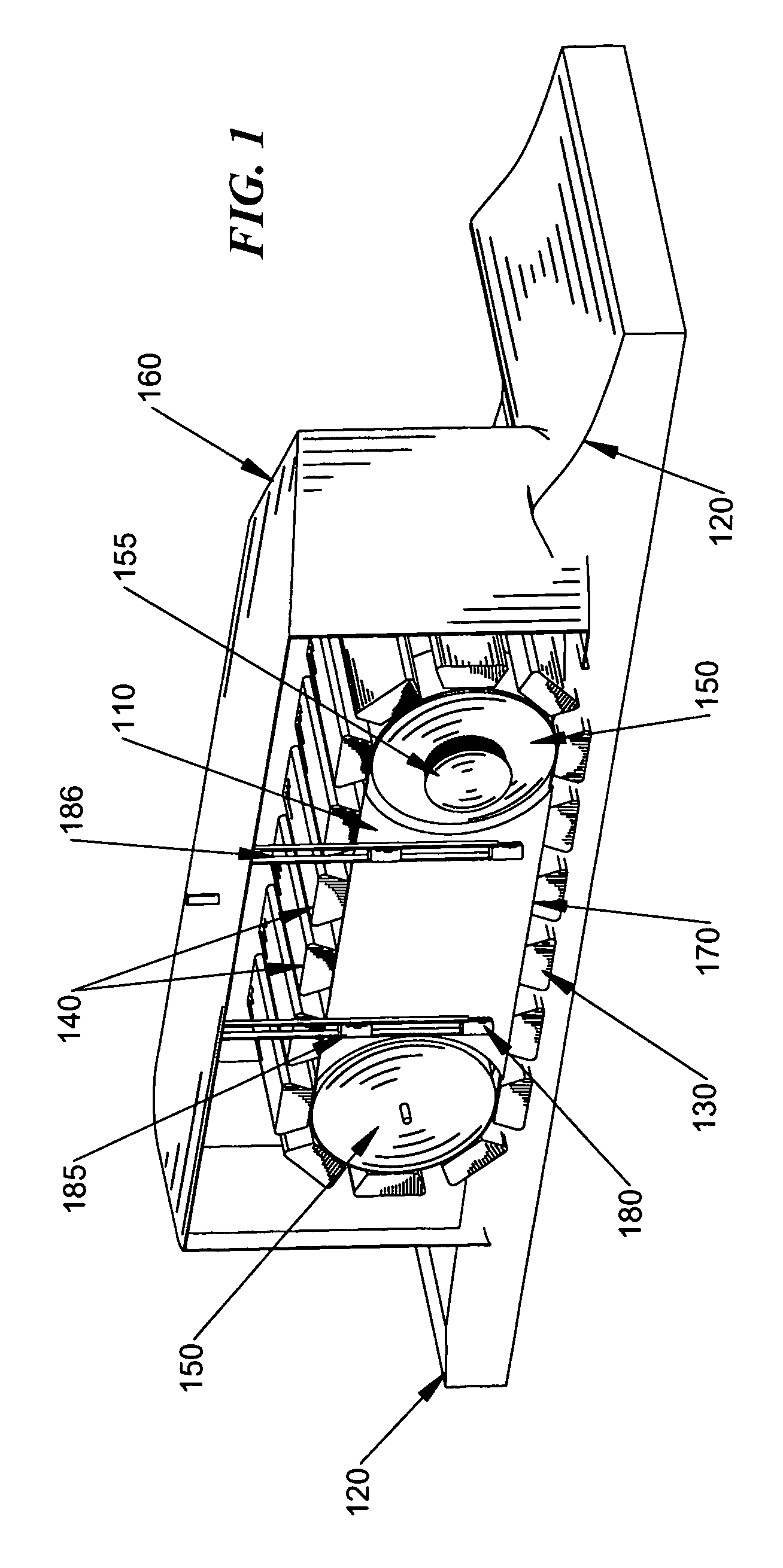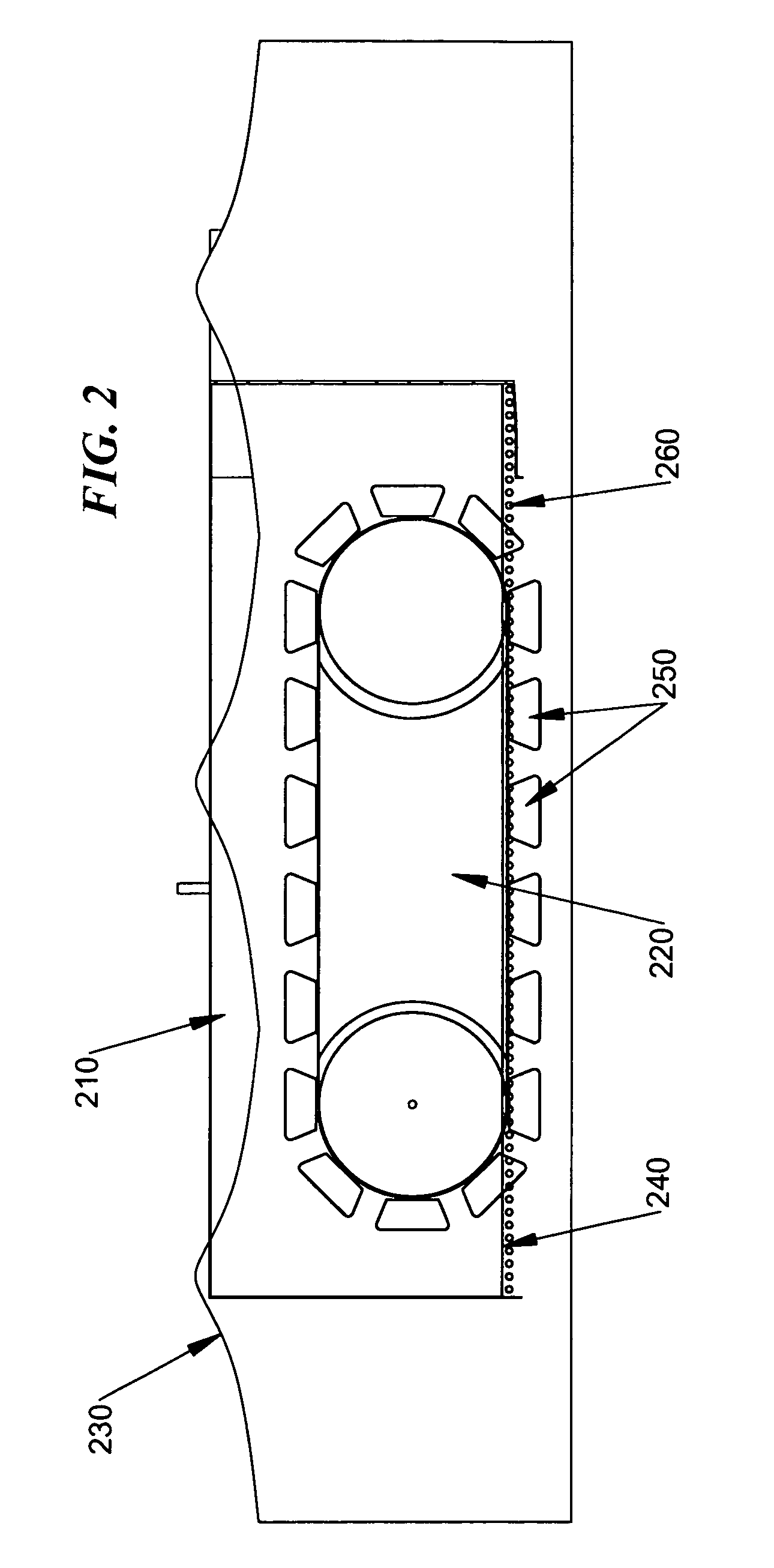Belt drive propulsion system
a belt drive and propulsion system technology, applied in marine propulsion, vessel construction, transportation and packaging, etc., can solve the problems of increasing the need to move the vessel exponentially, and the belt drive system can require lower horsepower at higher speeds, so as to improve the efficiency of the belt drive, reduce parasitic friction, and increase the speed
- Summary
- Abstract
- Description
- Claims
- Application Information
AI Technical Summary
Benefits of technology
Problems solved by technology
Method used
Image
Examples
Embodiment Construction
[0019]This invention provides propulsion for naval vehicles through the use of one or more suspended belt drives that utilize flexible belts with multiple attachments or variable lugs to meet changing conditions and requirements.
[0020]In one embodiment, as shown in FIG. 1, the belt drive 110 engages the water just above the water surface 120. The flexible belt 130 rotates between dual drive pulleys 150. The belt drive 110 is suspended within the open-bottomed enclosure 160, a feature that allows the drive to move up and down in order to maintain contact between the traction pads 140 and the water surface 120 and to prevent the belt drive from becoming completely submerged below the water surface. Only the force-transferring components of the belt travel below the surface of the water.
[0021]One objective of the invention is to minimize friction by having minimal relative velocity between the belt and the water surface. Friction is further decreased by preventing any unnecessary subme...
PUM
 Login to View More
Login to View More Abstract
Description
Claims
Application Information
 Login to View More
Login to View More - R&D
- Intellectual Property
- Life Sciences
- Materials
- Tech Scout
- Unparalleled Data Quality
- Higher Quality Content
- 60% Fewer Hallucinations
Browse by: Latest US Patents, China's latest patents, Technical Efficacy Thesaurus, Application Domain, Technology Topic, Popular Technical Reports.
© 2025 PatSnap. All rights reserved.Legal|Privacy policy|Modern Slavery Act Transparency Statement|Sitemap|About US| Contact US: help@patsnap.com



